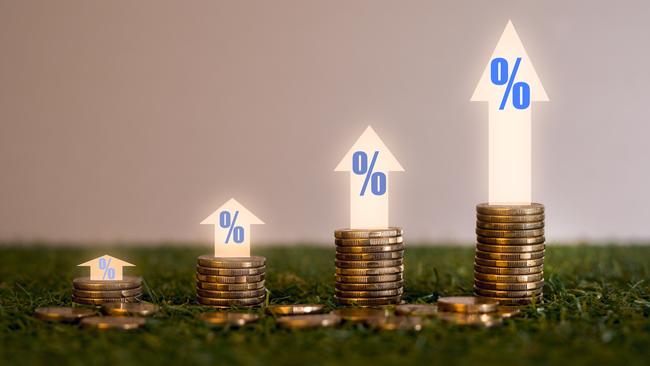Interest rates versus inflation: War where you’re caught in the middle
As interest rates head up, up and away, under-siege households may not understand the machinations behind their money pain.
National
Don't miss out on the headlines from National. Followed categories will be added to My News.
It’s easy to feel like the Reserve Bank of Australia has had a personal vendetta against you as it casually raised interest rates eight times last year.
The RBA’s 0.25 percentage point hit on Tuesday is its ninth straight rise, and borrowers who have suffered 50 per cent increases in their mortgage repayments in less than a year – some bracing for 72 per cent higher payments – must be asking “Why? Why? Why me?”
Nobody can easily find that much extra money to cover their biggest weekly household expense, and millions of mortgage customers are feeling under attack.
And here’s the painful truth: The RBA does want you to suffer.
That’s why it’s dishing out rate rises every month in machinegun fashion.
But don’t take it personally. In this case “you” means the broader borrowing population – homeowners, business owners and people with investment debt.
Family finances are collateral damage in the RBA’s bigger war – fighting to keep inflation where it wants it by killing people’s ability to spend.
Understanding this inflation versus interest rates battle won’t stop the pain, but will show you why it’s happening, and why the pain should not continue for too much longer.
The RBA’s official interest rate, the cash rate, is its only tool to try to keep inflation within a target band of 2 to 3 per cent, which it says encourages strong and sustainable economic growth and preserves the spending power of money.

If inflation gets too high it weakens purchasing power, puts pressure on household budgets and makes it difficult for people and businesses to plan ahead, the RBA says. It has a two-minute video explaining its inflation target and the costs of high inflation.
The RBA’s cash rate, now 3.35 per cent, effectively underpins many other interest rates in Australia, primarily variable-rate home loans.
Raising and dropping the cash rate is supposed to act like a brake or accelerator to slow down or speed up spending and the economy, although in the past year it’s been more of a sledgehammer.
Once the sledgehammer has the desired impact of smashing household and business spending into submission, the inflation rate should drop – theoretically, of course.
Consumer Price Index inflation is currently 7.8 per cent, well above that 2-3 per cent target, although economists believe it peaked in late 2022 and should drop back towards around 4 per cent this year. That’s still above the RBA target band, so rates could remain higher for longer.
The impact of the recent rush of rate rises is yet to hit many borrowers who fixed their home loan rates in 2020 and 2021.
Hopefully they have prepared for the looming mortgage cliff where their fixed rate of 2 per cent or lower suddenly reverts to a variable rate near 5.5 per cent – pushing many people’s mortgage bills up by $1000 a month in one big hit.
If the RBA hits us too hard with rate rises, it could send the entire economy into reverse – in other words, a recession, with the unemployment and business losses that come with it.
Our central bank is walking a fine line, and you can expect it to swing its sledgehammer more carefully in the months ahead.
More Coverage
Originally published as Interest rates versus inflation: War where you’re caught in the middle





